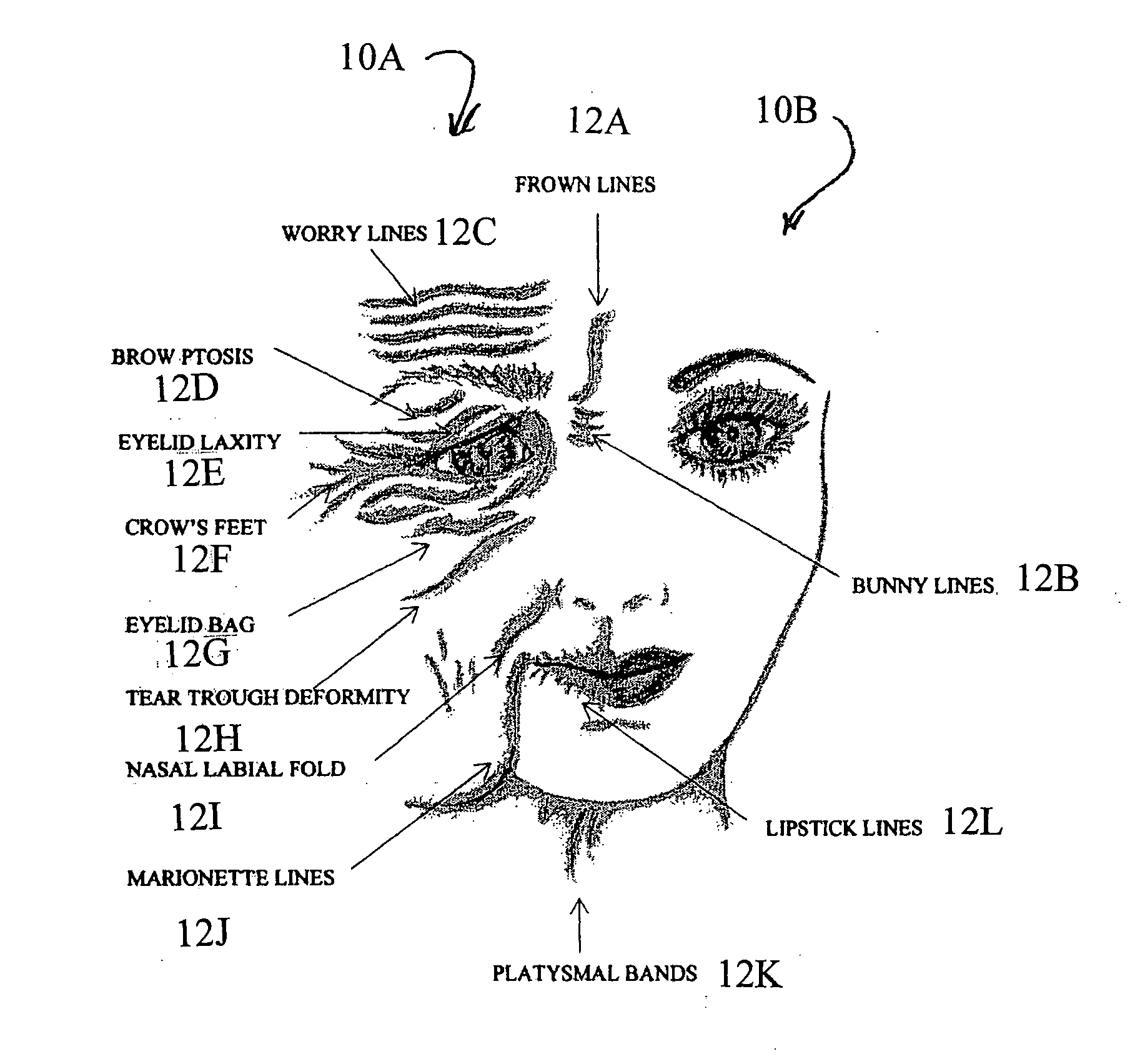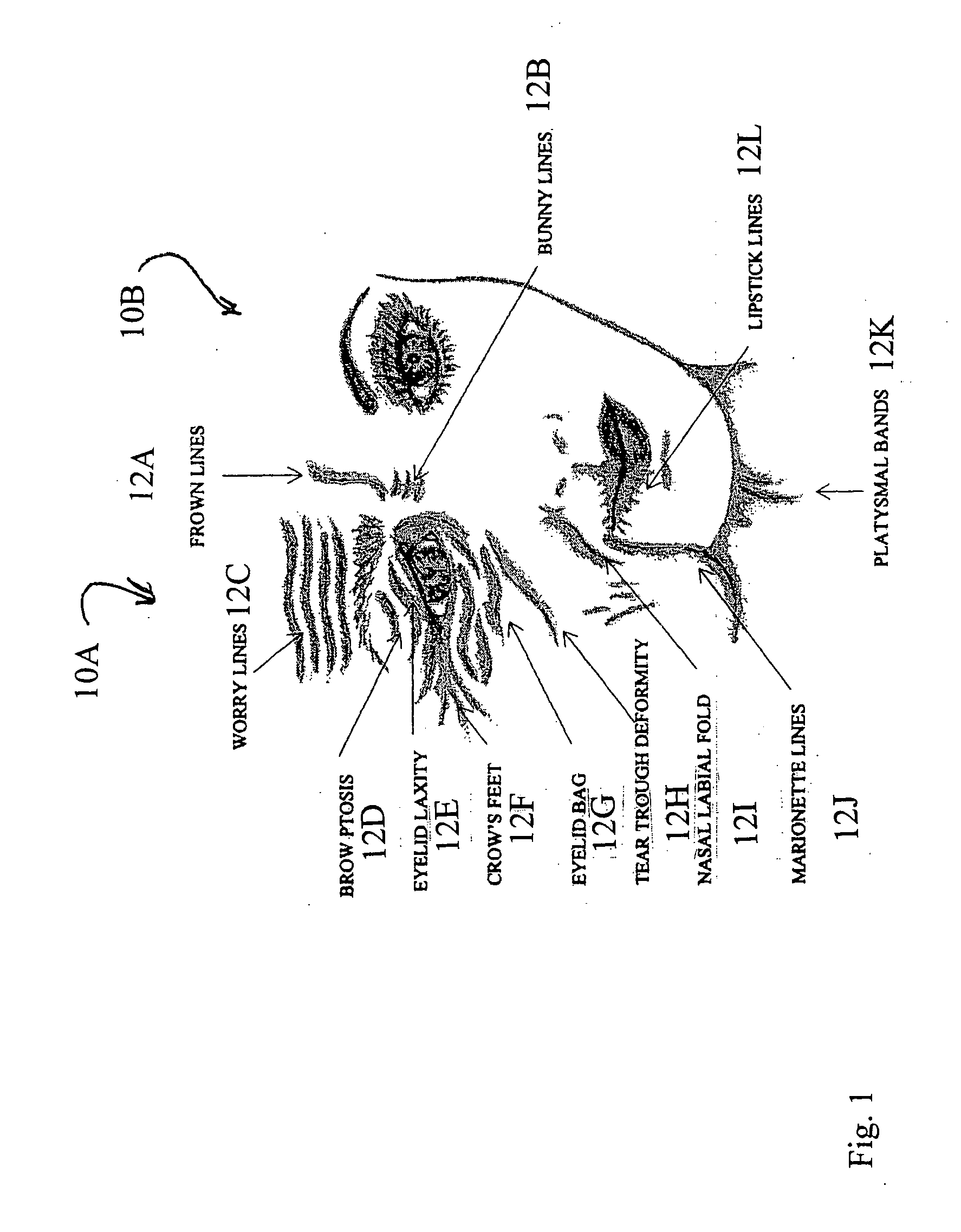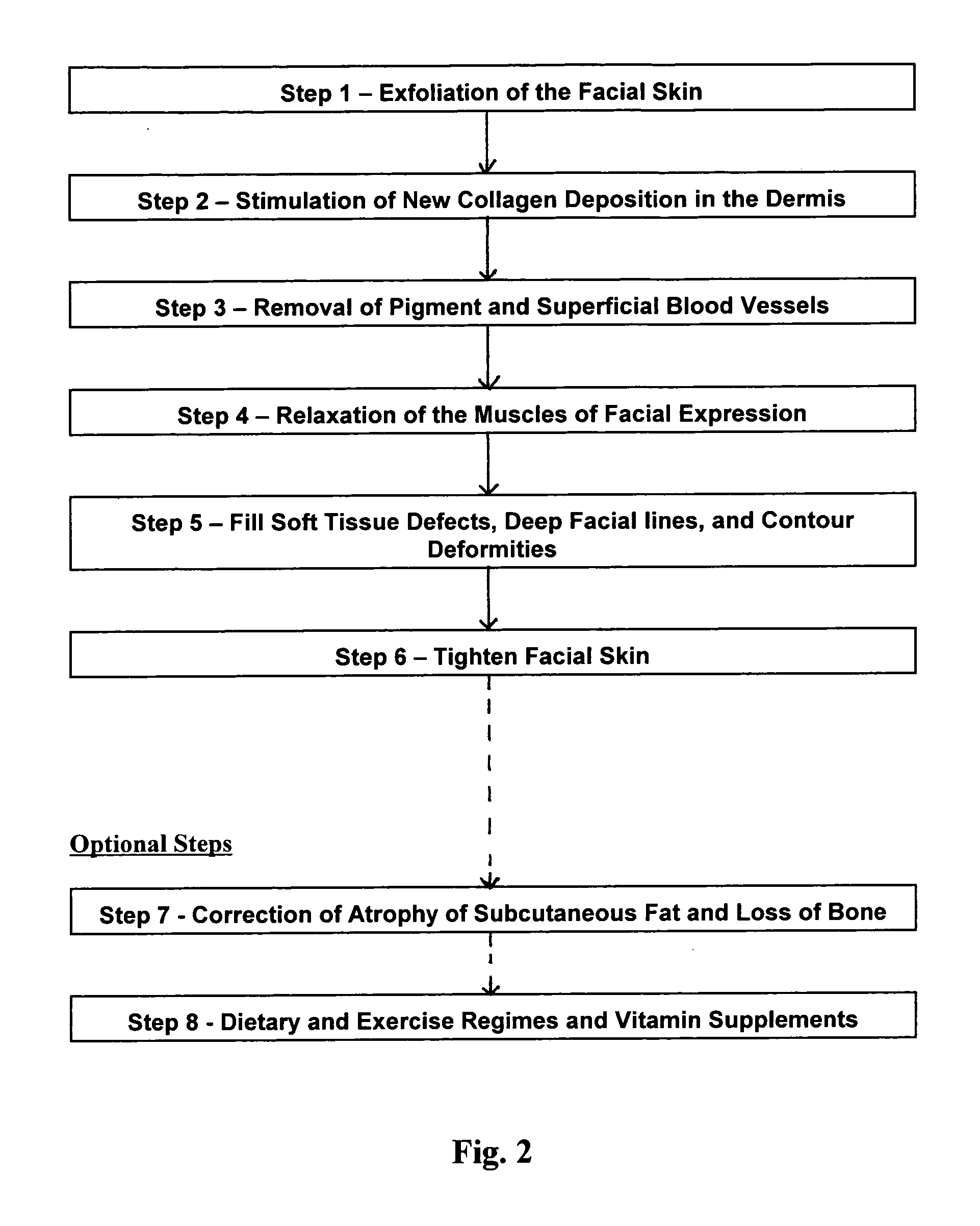In
spite of this major effort and expenditure, few if any
facial rejuvenation procedures effectively reverse the signs of facial aging and restore an
aging face to a truly youthful appearance.
The immense demand for non-surgical facial rejuvenation and the lack of effective non-surgical facial rejuvenation techniques have led to a plethora of heavily marketed ineffective one size fits all facial rejuvenation schemes from
wrinkle creams to, in one case, an incredible $10,000.00 week end “face lift in Manahatten which consistsprimarily of eating salmon and taking vitamins.
A major problem of the rejuvenation methods of the prior art is that most if not all current facial rejuvenation methods are uni-
modal and as such fail to address the fact that facial aging changes are multifaceted and a combination of many physiological, histological, and structural changes that occur over a lifetime.
The attempt to correct facial aging with one modality which can correct only one or a few components of the facial aging process will only achieve a partial correction or no correction at all.
The surface cells of the skin are histologically abnormal, which gives a dry dull cast to the skin, and multiple
brown pigment and red
blood vessel spots create a non-uniform blemished appearance to the skin and wrinkles are a pathognomonic sign of facial aging that everyone recognizes.
Type 2 facial aging changes are the result of changes in the deeper portion of the skin called the
Dermis wherein aging results in severe damage to the
dermis primarily as destruction and loss of collagen and
elastin, which are major supportive elements of the
dermis that provide elasticity, firmness, and fullness to the facial skin.
Aging also results in
atrophy of the subcutaneous (beneath the skin) fat, which results in looseness of the skin and
thinning of the skin.
While the facial and
eyelid contours are improved, the remaining skin on the face is still aged and displays both Type 1 and Type 2 facial aging changes, so that while the patients are left with a tighter face, the facial skin is still aged in appearance, which is hardly an effective facial rejuvenation.
Fears of
surgery and the possibility of serious complications such as
facial paralysis have also limited the acceptance and thus application of these surgical techniques.
Effective facial rejuvenation, however, requires a deep “peel” which results in loss of
skin pigment which in turn creates an unsightly demarcation line below the jaw where old skin stands out on the neck when compared to the resurfaced skin on the face.
Because of these complications, such procedures have not gained wide acceptance by physicians and patients.
While initial results were encouraging, the soft fillers “plumped up” lines and wrinkles, but did not correct Type 1 surface changes and did not address the facial laxity associated with aging.
The use of injected collagen or other
soft tissue fillers was further limited by the fact that the effect of such injections lasted only 6 weeks to 3 months because of degradation of the filler within the body, and by the fact that many people were allergic to the
soft tissue fillers.
These technologies have not gained wide acceptance, however, because they are ablative procedures, which means that the skin is ablated or surgically removed, necessitating a prolonged period of
surgical recovery or “down time”, with have associated complications, such as
hypopigmentation (loss of
skin color), scarring, and demarcation lines.
Again these technologies are uni-
modal in that they leave type1 superficial changes unaltered and thus at best achieve only a partial facial rejuvenation effect, and have associated undesired side effects such as discussed above.
These technologies have been remarkably successful in correcting pigmentary (
brown spot) and vascular (
blood vessel) Type 1 facial aging changes, but do not address neither the textural type 1 changes nor the Type 2 deeper facial aging changes.
A new (2005)
laser modality, referred to as the Fraxel®
laser, does address
pigment and texture problems and possibly promotes new collagen production, but does not remove vessels and does not tighten the skin, so that this method again addresses only a portion of the effects that must be addressed to achieve satisfactory skin rejuvenation. skin Again, all of these technologies deliver significant
thermal energy to the skin and must be accompanied by sophisticated cooling devices to avoid
burn injury to the skin, and the risk of
skin injury by inappropriate or incorrect use remains a
significant risk to the patient in terms of scarring.
Effective results also require expert application of the technique, a
time consuming fastidious process, and repeated (3-5) treatments over a period of 5-7 months.
In the most successful cases, however, the Type 1 facial aging changes are not addressed, leaving tightened but old looking skin on the surface, again a result of a uni-modal approach to a multi-faceted problem.
Its usefulness is limited, however, by the fact that its effect is temporary, lasting only 6 months to one year.
While an
aging face does not threaten the life of the individual, the contribution to
quality of life for a significant and likely increasing highly motivated segment of the
population is significant, as demonstrated by the enormous financial expenditures both by patients and commercial research endeavors in this field.
 Login to View More
Login to View More 


